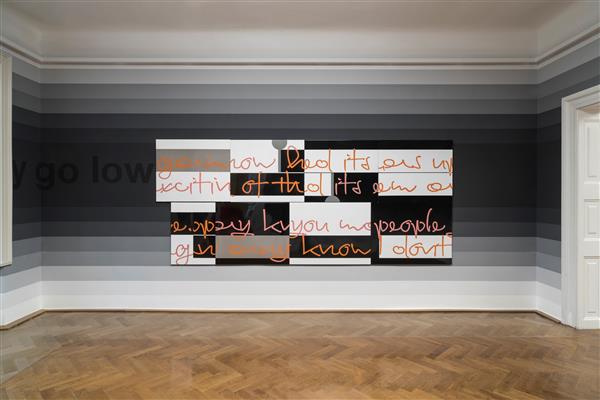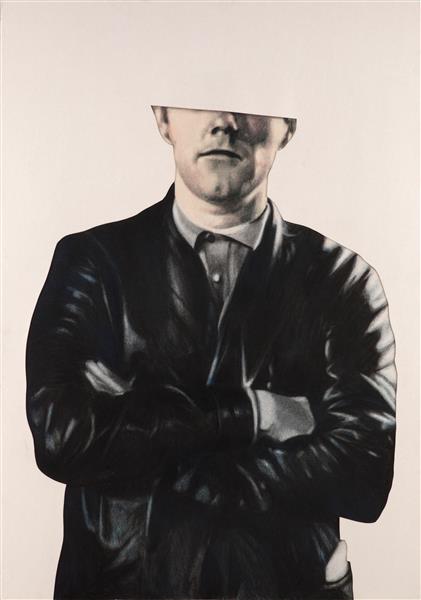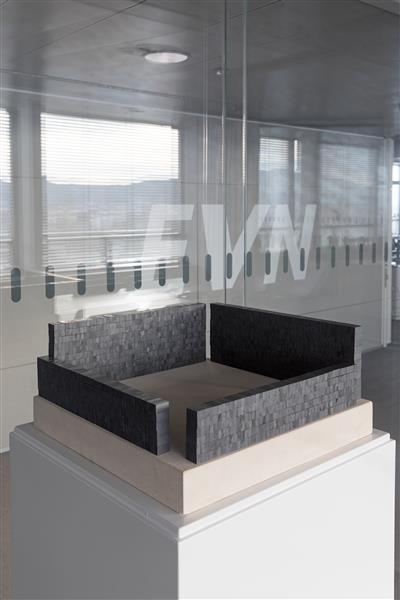Section XII
Ayşe Erkmen
enameled steel-plate
70 × 42 cm
2010
Acquisition 2011
Inv. No. 0221
Gemütliche Ecken (comfortable corners) is what Ayşe Erkmen calls the ten sculptures that were completed and temporarily set up in the central part of the town of Graz for the “Utopie und Monument” Project of steirische herbst 2009. The almost two-and-a-half meter high and wide aluminum compound boards, in different formats, smooth and colorfully painted, were placed in different parts of the town, casually leaning against lamps, poles, trees, etc. The artist, whose practice is predominantly site-specific, addressed a specific situation with this work. Back in Graz after an extended stay many years before, the artist was struck by the stunning increase in a variety of urban information-carriers, both commercial and non-commercial. She countered this with an alternative. Her Gemütliche Ecken deliberately dispensed with written or visual content, and persuaded through presence, abstraction and a certain fortuity in position and geometric form.
“Erkemenʼs goal is to make that which not visible visible, and to provoke aesthetic as well as poetic or culture-critical thought processes,” says Silvia Eiblmayr.* This particular case questioned the social use/abuse and possession of public space – a problem in current urban-planning that becomes more pressing through the privatization of public buildings and spaces. Ayşe Erkmen, however, doesn’t offer any practical solutions – her works opens the playing field for individual and aesthetic experiences.
For example, she built a water purification plant in the Arsenale building as part of the installation Plan B for the Turkish contribution to the 2011 Venice Biennial. The technical mechanism was constructed so as to treat water from the canal in a complicated process, and then pump it back. The purification process was visualized by the artist with a special scheme of colors. The industrial, purpose-driven purification system became a modernist sculpture that initiated contemplation. Ayşe Erkmenʼs work becomes a multifaceted experience through the implementation of diverse techniques and raw materials, as well as immaterial forms like language or recorded material. Though some are realized in monumental proportions (for example Shipped Ships, 2001), the interventions themselves are reduced, never excessive – similar to formal minimalistic artworks from the 60s.
This is also true for the series of Sections. They act like the little sisters to the Gemütliche Ecken from Graz, but are, however, conceived for mounting in an interior space. Instead of sturdy aluminum, Erkmen uses enamel, a material that is much more delicate to use, an ancient technique from mankind’s early history with a color lucidity that makes it the perfect raw material for the jewelry industry. Like the Ecken in Graz, the Sections are distinguished by irregular cuts and a geometry that seems “punched-out” without an obvious system in mind. And like the solution for the city-space, they disconcert through their simulated lack of reference and take part in the shaping of their environment. This time – “prêt à porter” – as a chamber piece for a smaller cohort of fans.
Heike Maier-Rieper, 2015 (translation: Virginia Dellenbaugh)
* Silvia Eiblmayr, “Ayşe Erkmen. Gemütliche Ecken,ˮ in: Sabine Breitwieser and steirischer herbst (Ed.), Utopie und Monument, Vienna 2011, 67.
Continue readingExhibitions
Wallpaper #6, evn sammlung, Maria Enzersdorf, 2023
Publications
Ayşe Erkmen & Mona Hatoum. displacements, Leipzig 2017, p. 100 ff
evn collection. 95–2015 Jubilee, Vienna 2015, p. 129–133
Utopie und Monument, Ausstellung für den öffentlichen Raum. steirischer herbst 2009–2010, Graz 2011, p. 66


